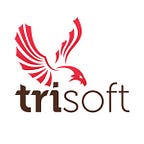How to Hire People During Difficult Times
By TRISOFT team
If, regardless of the social and economic, local and international circumstances, your business needs to hire one or several people, it might be difficult to get the process started and completed while keeping in mind the rules and principles of the new state of affairs.
During a hard recession or a global pandemic, such as the one we are now experiencing, recruiting tactics must be adapted to fit the new reality: online interviews, virtual training, social distancing events to help new employees meet and become familiarized with the rest of the team, etc.
Here are a few strategies that can help you get your bearings when it comes to drafting top talent that will meet your professional needs.
1. Make your company visible
First of all, people need to know that you’re hiring. Most qualified workers who were let go when the crisis hit might believe that all companies are going through a rough patch, so none of them are probably hiring. Therefore, you need to make it very clear and visible that you are. The available candidates will migrate toward those businesses which show that they are moving forward and are still active on the market.
List all current job openings on the company’s official website, draw attention to open positions on social media and other recruitment apps, advertise them in newspapers and on TV, and make sure that they are constantly updated and refreshed, so that people won’t believe it’s no longer vacant.
Encourage current employees to share the company’s social media posts on their personal pages, so that you may reach a new target pool, and you can even incentivize them by offering bonuses for any hiring that comes as a result of a recommendation or share.
2. Rethink your candidate pool
Secondly, you can take another look at your already established candidate pool. Almost all companies keep databases of people who previously submitted their resumés or came in for an interview at some point. Maybe the candidate wasn’t right for the position or the team at that moment in time, but might fit perfectly now, since conditions and circumstances have changed.
If you don’t want to pursue an active recruiting campaign or your advertisements haven’t yielded the expected results, you can try to examine the existing list of former candidates and choose some from there. Check if they haven’t found anything else in the meantime or would like to make a change in their lives and come work for you and take things from there.
3. Know exactly what you have to offer
Next, an important aspect is being realistic and explicit in what you have to offer. Times are surely uncertain for employees and businesses alike, so people might be more willing to lower their expectations and companies will probably have to lower their financial offers and benefits. Make sure your company can afford a new employee without having to cut back from somewhere else or without it affecting the activity as a whole. Be aware of what you can definitely propose and communicate it clearly to any interested party.
You should strive to create a permanent position, with a competitive salary and perks, but without going overboard, since this is not the time for any extravagances. Lay out all the conditions, both present and future — maybe for the moment, the employee will have to work remotely, but down the road, they will be expected to show up at the office. Or maybe the pay is limited now, but bonuses will be available when the crisis has passed.
4. Be thorough when choosing
Furthermore, you need to set up a thorough recruitment procedure. Hiring remotely is a very different experience than hiring in person, so you and your Human Resources department should be prepared for the novel process.
Create an online system and test it ahead of time, so there will be no glitches when it comes time to have the real interviews. Decide in which order will departments have a chat with the candidate: HR, the team leader from the project that the new employee will be part of, the technical director, the general manager, etc. The rest of the preparations will be similar to those you would undertake for an in-person hiring situation: compile a list of potential candidates, narrow it down to a few and decide which ones will be interviewed. Send out invitations for video meetings, in which you will specify exactly what the process will look like, what your expectations are from the job seeker and what your role will be. Indicate the date, time and who should call whom. Provide a link to the online platform where the interview will take place. Mention a few key aspects about the job requirements and benefits.
Impose a few strict standards for yourself and stick to them, because it is very likely that in these difficult times, there will be huge numbers of candidates and you will have to choose the best suitable for your team and your company.
Our advice
Other things you should consider are: asking for referrals — the fact that an employee has had a positive experience in another company is a plus, but you should still decide whether he/she is a good fit for you, which is why you might try hiring on a trial basis — this way, you have 1–3 months to tell if you have made the right choice.
At TRISOFT, we believe there is no perfect recruitment strategy, and the recruitment process will vary with each business, but by using the tips outlined above, you will be able attract the best potential candidates on the job market. Any successful company that wants to hire top talent has to develop a good recruitment strategy and be prepared to set up and use a novel system for hiring and training employees.
